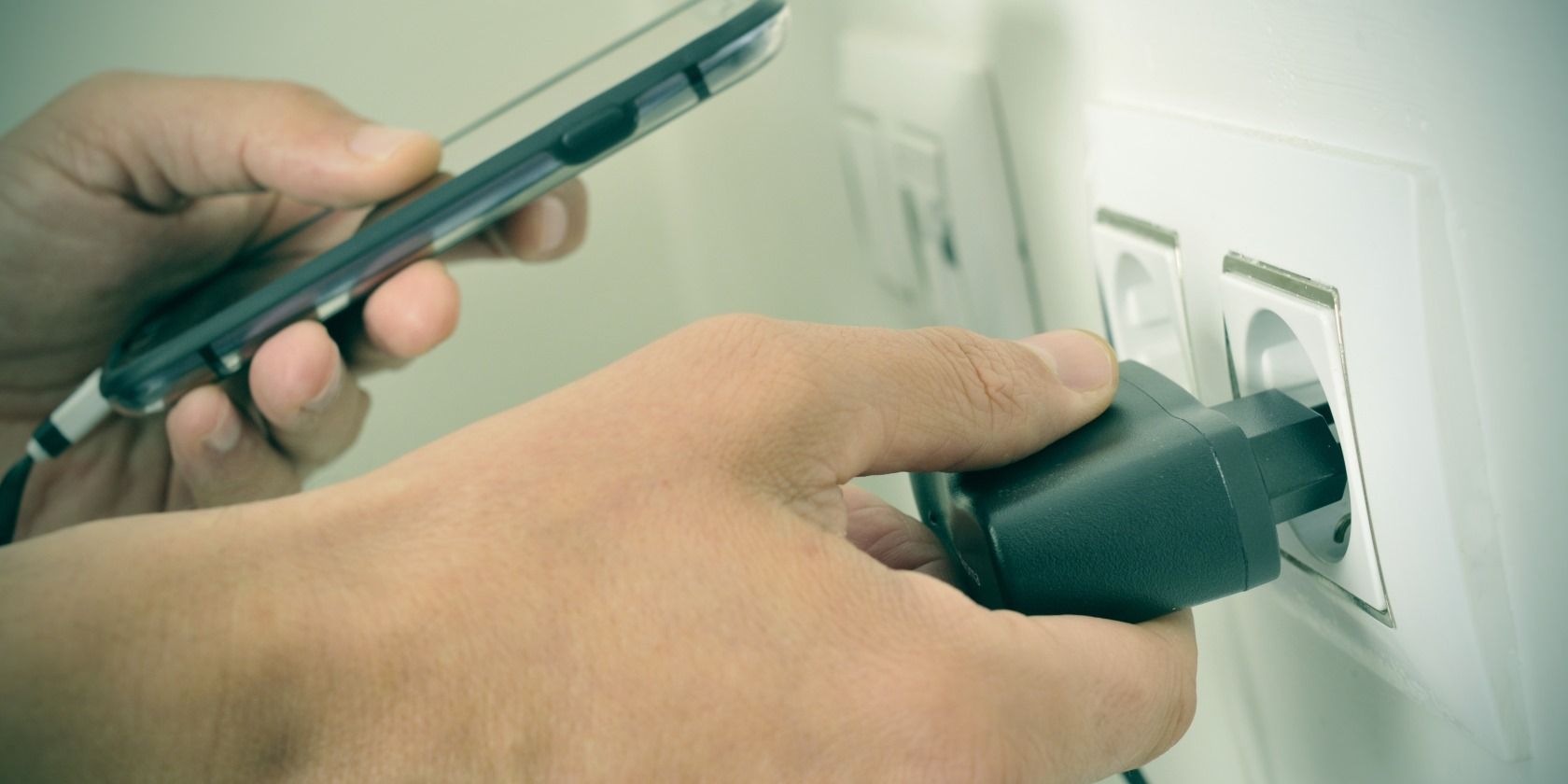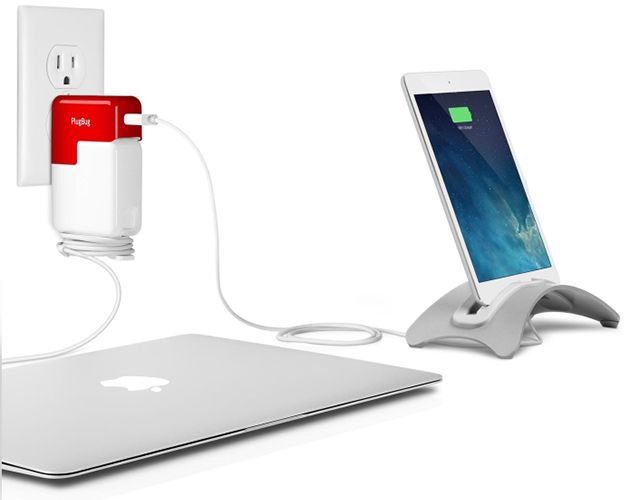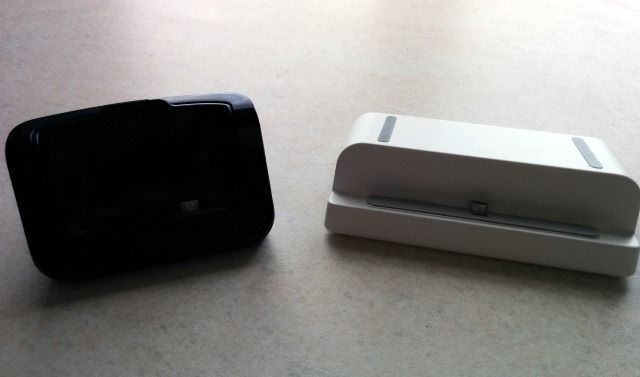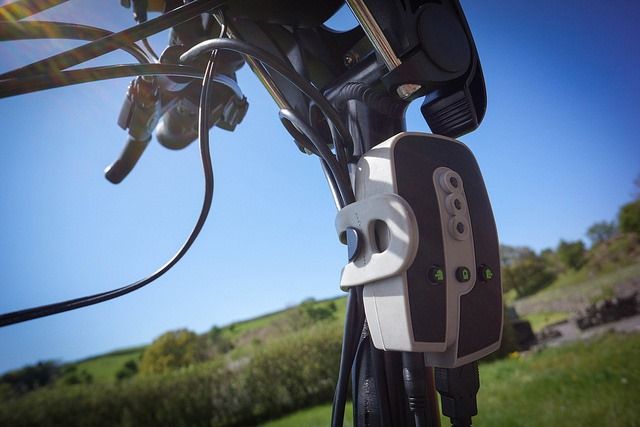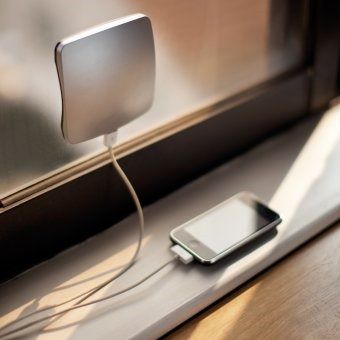How do you recharge your phone? At a guess, I'd say you plug it into a standard charger, or even the USB port on your computer. The dull way.
What if I told you that you're doing it wrong? You don't have to be tied to the mains electric supply when recharging your smartphone, and if you are, you can still use your phone productively. Chargers are becoming ever more useful and flexible, so let's take a look at the smart ways to charge your smartphone, whether you're using an iPhone, Android or Windows Phone.
Three Simple & Smart Ways to Charge
Charging your phone simply is still an option, but if you're going to plug your charging cable into the main power outlet, you might as well be smart about it.
Use a MacBook and an iPhone, and regularly frustrated that you can't charge them at the same time due to your laptops limited ports? Charging from a USB port can be slow, but with the PlugBug, you can recharge both devices at the same time from a single power outlet. If you have your MacBook calibrated for best performance, however, you should have a free mains outlet for charging.
Now, that is smart. Designed to piggyback onto a MacBook Power Adaptor, the PlugBug retails for $34.99 and is available from Amazon.
Charging your phone (or even a tablet) and using it at the same time isn't exactly difficult, but it's often not convenient. The best solution is to use a case with a built in stand while charging, or a charging stand like the Twelve South HiRise stand for iPhone 6/6 Plus, iPhone 5/5s and iPad mini, available for $34.95. This device is designed to let you use your phone or tablet while it charges for browsing and making video calls.
Android users aren't alone when it comes to charging stands and docks, and should find a wide selection of similar (albeit, less elegant) devices to buy online. I've been using the stand on the left for my HTC One M7 for the past couple of years, while the one on the right is suitable for a Samsung Galaxy Tab 4.
Wireless charging is becoming an increasingly popular solution to recharging batteries, especially as many micro-USB cables don't seem to be reliable, but it can be expensive. It has been used by Nokia in its Windows Phone Lumia devices, but seems to have been overlooked since Microsoft completed its takeover of the Finnish company's phone division. Since then, however, Samsung has been making wireless charging (also known as inductive charging) for its most recent devices (Galaxy S 4, Galaxy S 5, Galaxy Note 3, Galaxy Note 4 and Galaxy S 6), although these phones require a special cover to facilitate wireless charging, which can make wireless charging an expensive business (a total of $85).
Charging Your Phone in a Vehicle
Does your car have a cigarette lighter? Perhaps it has a USB connector? Either of these ports can be used to recharge a smartphone or tablet, or provide enough power to run without the battery discharging. Depending on the position of these ports, you may need to invest in additional cabling to ensure that your phone is in a usable position while driving (by your co-pilot, of course).
What about bicycle dynamo chargers? Things have come a long way since the days of strapping a dynamo to your back tire to power a light for nighttime cycling. Devices like the Biologic ReeCharge and Tigra Sport Bike Charge Dynamo Light & USB Charger are designed to either replace or connect to an existing dynamo, producing a safe, converted current from the dynamo and using it to charge your smartphone (or any other rechargeable devices you might have with you).
Dynamos are only the tip of the iceberg when it comes to smartphone charging solutions aimed at cyclists.
If you're cycling with your smartphone on your bike or strapped to your arm, ensure that you stick to the same philosophy as when driving, and stay safe.
Portable recharging batteries, meanwhile, are a good solution to charging your phone during extended periods away from a power outlet. These devices hold massive charge, often more than twice what your smartphone needs, and can even recharge your laptop. We've previously looked at the popular Power Castle, but if you're using this solution, you need to ensure the battery is kept charged.
Eco-Friendly Smartphone Recharging Options
With the explosion in outdoor pursuits and music festivals over the past few years, and the need to have a smartphone handy, various eco-friendly charging options have hit the marketplace. These smart recharging tools use renewable energy, enabling you to keep your device charged without relying on a power grid or vehicle.
Solar charging is an obvious option, especially if you're camping in the great outdoors or on a long journey. Unfortunately solar power still hasn't taken off as a mainstream power generation method, but it is useful for recharging smartphones. Solar chargers vary in type, from the basic foldable solar cells that sit on a flat surface and then slip into your pocket to those suited to long-haul flights.
These window solar chargers – such as the Window Solar Charger, designed to stick to glass to soak up light from the sun – are becoming more popular, and can also be used in cars, hotels or anywhere you require a charger and have access to a window.
For fans of wind power, the HYmini (which also features a solar panel) is an affordable solution that's capable of using wind (and even air passing through the blades as you move) to recharge your smartphone.
Eco-Friendly solutions aren't only for use in the field. The Epiphany onE Puck is a disc-shaped recharger that uses the heat or chill from your fresh coffee or smoothie to recharge. No, really: it can! A successful Kickstarter project, there is still an opportunity for backers to own one of these.
Charging your phone shouldn't leave you stuck at home or in the office. It shouldn’t stop you from recharging other devices if power outlets are limited.
Have you used one of the more unusual charging solutions? Tell us about it in the comments.
Featured Image Credit: Man plugging in phone via Shutterstock

